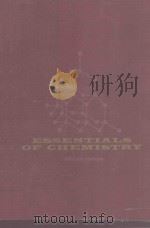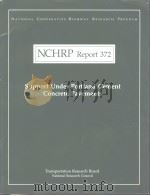《The Chemistry of PORTLAND CEMENT SECOND EDITION 1995》
| 作者 | 编者 |
|---|---|
| 出版 | 未查询到或未知 |
| 参考页数 | 793 |
| 出版时间 | 没有确切时间的资料 目录预览 |
| ISBN号 | 无 — 求助条款 |
| PDF编号 | 812252048(仅供预览,未存储实际文件) |
| 求助格式 | 扫描PDF(若分多册发行,每次仅能受理1册) |
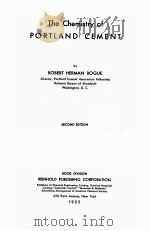
Ⅰ.The Chemistry of Clinker Formation1
1.HISTORY OF THE CEMENT INDUSTRY3
Cements in antiquity3
The Invention of Portland cement5
John Smeaton6
Byran Higgins7
Bergmann8
Joseph Parker8
L.J.Vicat9
J.F.John9
James Frost10
Joseph Aspdin10
I.C.Johnson11
The development of the cement industry12
David Saylor13
Growth of the industry14
Select bibliography20
2.CLASSIFICATION OF CEMENTS23
3.THE MANUFACTURE OF PORTLAND CEMENT37
Outline of operations37
Source of raw materials38
Proportioning of raw materials40
Preparation of kiln feed42
The Dry Process43
The Wet Process43
Flotation47
The burning operation51
American practice51
European innovations53
Treatment of clinker56
Properties of cement59
Combined processes in cement manufacture60
4.EARLY EXPERIMENTATION ON THE CONSTITUTION OF PORTLAND CEMENT63
The period of speculation63
Introduction of the scientific method65
Microscopic studies67
Henri Le Chatelier67
A.E.Tornebohm68
Comparison of researchers68
Other theories of the period70
Hypotheses of solid solution72
Clifford Richardson72
Wilhelm Micha?lis74
E.D.Campbell and A.H.White76
Constitutional formulas of cement compounds77
W.Asch and D.Asch77
Ernest Martin79
F.W.Clarke81
5.METHODS OF INVESTIGATION85
Petrographic technique85
Powder mounts and thin sections85
Polished sections86
Etching technique87
X-ray powder diffraction90
Electron microscopy and diffraction95
Chemical methods98
Free CaO98
Ca(OH)2 in set cement102
Free CaO and Ca(OH)2 in cement103
Determination of uncombined magnesia104
Spectrographic analysis106
Flame photometry108
Polarographic analysis109
Heat of solution110
Procedure110
Estimation of glass content113
6.HEAT TREATMENT IN MANUFACTURE121
The burning process121
Volatilization of alkalies126
Thermal reactions of clinker formation129
The cooling process139
7.THE PRINCIPAL CONSTITUENTS OF CLINKER145
Microscopic structure145
Tricalcium silicate148
Stability of 3CaO·SiO2148
The alite problem152
Dicalcium silicate160
Theα-βinversion160
α-C2S solid solution163
Theβ-γinversion170
Free CaO and MgO171
Interstitial material174
Rectangular dark interstitial material174
Prismatic interstitial material176
Amorphous dark interstitial material182
Light interstitial material184
Crystal structure187
Tricalcium aluminate188
Brownmiller’s metastable phase188
Dicalcium silicate191
Tricalcium silicate195
8.THE COMBINATION OF THE CEMENT COMPONENTS203
Reactions in the solid state203
Effects of particle size206
The effects of composition208
Temperature of liquid formation209
The amount of liquid formed215
The addition of mineralizers217
Effect of compound saturation218
9.DESIGN AND CONTROL OF CEMENT COMPOSITION225
Development of proportioning formulas225
The principle of chemical control235
Comparison of clinker compositions obtained by different methods238
10.CALCULATION OF PHASE COMPOSITION245
Equilibrium crystallization245
Equilibrium mixture containing liquid249
Classification of systems250
Nonequilibrium cooling255
Classification of crystallization areas255
Independent crystallization of liquid257
General equations263
Ⅱ.The Equilibria of Clinker Components269
11.THE PRINCIPLES OF HIGH-TEMPERATURE PHASE RESEARCH271
The phase rule271
Usefulness of the phase rule271
Derivation of the phase rule272
Binary systems274
Polycomponent systems279
No compound formation280
The course of crystallization281
Dahl’s method of computing composition282
Compound formation,stable at melting point284
Compound formation,unstable at melting point285
Stages followed with heat input287
Crystallization in ternary systems containing solid solutions289
Analytical treatment of multicomponent systems293
12.THE TECHNIQUES OF HIGH-TEMPERATURE PHASE RESEARCH299
General procedures299
Preliminary operations299
The quenching method300
The annealing method300
Differential thermal analysis302
Fnrnace equipment302
Electric muffle302
Containers for charges304
Quenching furnace305
Centrifuge furnace306
Platinum strip furnace308
Iridium furnace308
Iridium button furnace309
Resistance furnace309
Solar furnace310
Induction furnace310
Temperature control311
Calibration of thermocouples312
Equipment for differential thermal analysis313
Pilot plant319
13.THE SYSTEM CaO-Al2O3-SiO2323
The oxides323
Calcium oxide(lime,CaO)323
Silicon dioxide(silica,SiO2)324
Aluminum oxide(alumina,Al2O3)324
The system CaO-SiO2325
Phase relations325
Optical properties of the calcium silicates329
Preparation of the calcium silicates331
The system CaO-Al2O3334
Phase relations334
Composition of the calcium aluminates335
Optical properties of the calcium aluminates337
Preparation of the calcium aluminates338
The system Al2O3-SiO2339
The system CaO-Al2O3-SiO2339
Stability fields339
Crystallization areas344
Course of crystallization346
The field of portland cement349
14.SYSTEM CONTAINING MgO WITH CaO,Al2O3,SiO2355
MgO355
CaO-MgO355
MgO-Al2O3355
MgO-SiO2355
CaO-MgO-Al2O3356
CaO-MgO-SiO2357
C2S-MgO-C5A3358
CaO-MgO-Al2O3-SiO2360
15.SYSTEMS CONTAINING FeO,TiO2 AND P2O5365
The ferrous-oxide systems365
Fe3O4-Fe2O3365
CaO-FeO366
SiO2-FeO367
CaO-FeO-SiO2368
MgO-FeO-SiO2369
FeO-Al2O3-SiO2369
CaO-FeO-Al2O3-SiO2370
The titania systems371
TiO2371
TiO2-SiO2371
TiO2-Al2O3371
Na2O-TiO2372
CaO-TiO2-SiO2373
Systems containing P2O5373
16.SYSTEMS CONTAINING Fe2O3 WITH CaO AND SiO2377
Fe2O3377
CaO-Fe2O3377
CaO-C2S-CF378
CaO-C2S-C2F379
CaO-Fe2O3-CaCl2382
17.SYSTEMS CONTAINING MgO AND Fe2O3 WITH CaO AND Al2O3385
Al2O3-Fe2O3385
MgO-Fe2O3385
CaO-C5A3-CF385
C4AF-MgO390
CaO-CA-C4AF391
CaO-C5A3-C2F394
18.SYSTEMS CONTAINING MgO AND Fe2O3 WITH CaO,Al2O3 AND SiO2401
CaO-C2S-C5A3-C4AF401
CaO-C2S-C5A3-C2F409
The system CaO-C2S-C5A3-C2F modified by 5 per cent MgO412
Crystallization in polycomponent systems415
19.SYSTEMS CONTAINING K2O419
The alkalies419
K2O-CaO419
K2O-SiO2419
K2O-Al2O3421
K2O-CaO-Al2O3421
KA-C4AF-C2F423
K2O-CaO-SiO2425
C2S-KCS425
C3S-KA426
C2S-KA428
C3S-C2S-KA428
C3S-C2S-KA-Fe2O3428
KC23S12-CaO-C5A3429
KC23S12-MgO432
20.SYSTEMS CONTAINING Na2O AND Li2O AND THE ALKALIES WITH SO3433
Na2O-CaO433
Na2O-SiO2433
Li2O-SiO2433
Na2O-Al2O3433
KS-NS-SiO2434
NS-LS-SiO2434
NS-Fe2O3-SiO2435
Na2O-CaO-Al2O3435
Na2O-CaO-SiO2440
Na2O-CaO-Al2O3-SiO2441
CaO-C4AF-(NA3)446
Na2O-CaO-C5A3-C2F447
Na2O-CaO-C2S-CF448
Na2O-CaO-Al2O3-Fe2O3-SiO2449
KC23S12-CaSO4450
K2SO4 and Na2SO4 in clinker452
Effect of SO3 on the alkali compounds of clinker453
Ⅲ.The Chemistry of Cement Utilization461
21.EARLY STUDIES ON CEMENT HYDRATION463
The crystallization theory463
Hydration464
Crystallization464
Hardening466
Application to portland cement467
The colloid hypothesis471
Discussion of the crystallization and colloid theories473
The chemical nature of the setting and hardening processes482
Reactions of hydration482
Solid solutions483
Identification of phases484
The chemical significance of rate of set486
Introduction of retarders486
Solubility studies487
Alkali action488
Electrolytic effects489
Miscellaneous retarders491
22.THE SYSTEM CaO-SiO2-H2O495
The principles of hydrolysis and hydration495
Hydrolytic reactions of the calcium silicates496
Complete hydrolysis497
Hydrolytic equilibrium498
Interaction with excess of water500
Ionization constants502
Interaction at higher concentrations505
The pattern of phase equilibria508
Nomenclature of the calcium silicate hydrates508
Interaction of components509
Dehydration studies524
The chemical nature of the hydration products526
The CaOSiO2 relationship526
The water content528
Hydrothermal reactions529
Early investigations529
Later studies534
The structure of the hydration products538
23.SYSTEMS CONTAINING CaO AND H2O WITH Al2O3 AND Fe2O3543
Hydrolytic equilibria543
Action of water on the calcium aluminates545
Action of Ca(OH)2 solution on the calcium aluminates548
The calcium aluminate hydrates550
The C3A hydrates551
The C2A and C4A hydrates555
Equilibria in the system CaO-Al2O3-H2O559
The calcium ferrite hydrates562
Hydration of the alumina and iron compounds in steam564
24.THE ALUMINATE AND FERRITE COMPLEX SALTS571
Early history571
The calcium sulfoaluminates574
The calcium chloraluminates575
The calcium sulfoferrites579
The hydrogarnet solid-solution series579
The sulfoaluminate solid-solution series581
The system CaO-Al2O3-CaSO4-H2O582
The sulfoaluminate-alkali systems587
25.THE HEAT OF HYDRATION591
Heats of complete hydration592
Effects of composition593
Effect of glass content and other variables601
Comparison of methods603
26.THE STRUCTURE OF HYDRATED CEMENTS607
Microscopic structure of the hydrated compounds607
Tricalcium silicate608
Dicalcium silicate609
Tricalcium aluminate610
Tetracalcium aluminoferrite611
K2O·23CaO·12SiO2613
Mixed compounds and commercial cements613
Effect of gypsum613
Effect of saturated Ca(OH)2 solution614
Effect of alkali compounds615
Microscopic structure of cement pastes615
Physical characteristics of hydrated pastes623
Gel structure623
Adsorption studies624
Electron optics627
27.THE SETTING OF CEMENT PASTES647
Theories of the setting process647
Selective hydration647
Crystallization of hydration products649
Film formation653
Mutual coagulation656
False set658
The effect of gypsum660
Optimum gypsum content662
The effects of other materials664
Phase equilibrium in the presence of CaSO4666
28.THE HARDENING OF CEMENT PASTES669
The hydrolysis and hydration of cement pastes669
Hydration measured by depth of hydrated layer673
The soundness of pastes674
The effects of composition678
The effects of cooling rate683
The effects of steam treatment686
29.EXTERNAL REACTIONS OF HYDRATED PASTES691
Reactions with sulfate solutions692
The nature of sulfate corrosion692
The effects of steam curing694
The specific effects of the cement compounds695
The alkali-aggregate reaction700
The action of pozzolanas708
30.TESTS FOR CEMENT QUALITY715
Methods for predicting sulfate resistance716
Visual observation717
Strength change718
Length change720
Elastic modulus724
Methods of calculation726
Methods based on chemical action727
The formation of calcium sulfoaluminate727
A sulfate susceptibility test728
The water test for durability730
The disintegration index731
The sugar-solubility test732
Tracer studies of ion diffusion735
APPENDIXES738
1.X-Ray Powder Diffraction Patterns(d)of Clinker Components and Compounds738
2.X-Ray Powder Diffraction Patterns(d)of Cement Hydration Products744
3.Equations for Calculating Phase Composition of Clinker754
4.Effect of Various Substances on Concrete,and Protective Treatments,Where Required766
5.Miscellaneous Tables774
Conversion factors774
Molecular weight and percentage oxide composition of principal com-pounds of portland cement clinker(1954)775
AUTHOR INDEX777
SUBJECT INDEX783
《The Chemistry of PORTLAND CEMENT SECOND EDITION 1995》由于是年代较久的资料都绝版了,几乎不可能购买到实物。如果大家为了学习确实需要,可向博主求助其电子版PDF文件。对合法合规的求助,我会当即受理并将下载地址发送给你。
高度相关资料
-
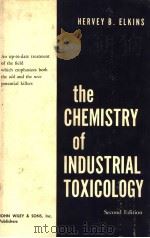
- THE CHEMISTRY OF INDUSTRIAL TOXICOLOGY SECOND EDITION
- JOHN WILEY & SONS,INC.
-

- TECHNOLOGY OF PORTLAND CEMENT AND BLENDED CEMENTS
- 1980 WHEELER PUBLISHING
-

- THE INORGANIC CHEMISTRY OF BIOLOGICAL PROCESSES SECOND EDITION
- 1981 JOHN WILEY & SONS
-
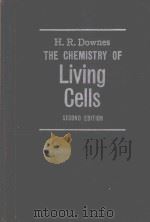
- THE CHEMISTRY OF LIVING CELLS SECOND EDITION
- 1963 WILLIAM CLOWES AND SONS LIMITED
-

- The chemistry of cereal proteins second edition
- 1996 CRC Press
-

- The chemistry of natural products second edition
- 1993 Blackie Academic and professional
-

- FUNDAMENTALS OF CHEMISTRY SECOND EDITION
- 1998 MCGRAW-HILL
-

- COLOR CEMENT HANDICRAFT SECOND EDITION
- 1924 THE DAVIS PRESS
-
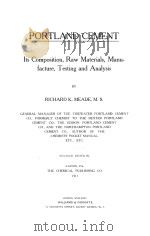
- PORTLAND CEMENT SECOND EDITION
- 1911 THE CHEMICAL PUBLISHING CO.
-

- THE CHEMISTRY OF PORTLAND CEMENT
- 1947 REINHOLD PUBLISHING CORPORATION
-
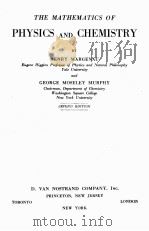
- THE MATHEMATICS OF PHYSICS AND CHEMISTRY SECOND EDITION
- 1956 D. VAN NOSTRAND COMPANY INC.
-

- WORLD OF CHEMISTRY SECOND EDITION
- 1996 SAUNDERS COLLEGE PUBLISHING
提示:百度云已更名为百度网盘(百度盘),天翼云盘、微盘下载地址……暂未提供。➥ PDF文字可复制化或转WORD
